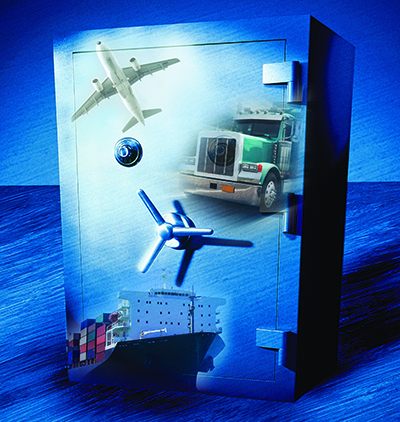Sorry, but your login has failed. Please recheck your login information and resubmit. If your subscription has expired, renew here.
September-October 2017
When it comes to the next generation of supply chain management, the future just may be now. That’s one of the conclusions reached by Greg Gorbach, an analyst at the research firm ARC Advisory Group, after surveying supply chain executives, including subscribers to Supply Chain Management Review, on the digitization of their supply chains. In “The Great Digitization of Industry,” Gorbach notes that while it may take years for the widespread adoption of new technologies such as machine learning, additive manufacturing, smart factories and advanced analytics to become commonplace, digitization across verticals is happening faster than many of us… Browse this issue archive.Need Help? Contact customer service 847-559-7581 More options
It doesn’t take a tsunami, flood, cyber attack or geopolitical instability to disrupt a supply chain. In some cases, all it takes is one Tier 2 supplier to file for bankruptcy—or one plant fire at a Tier 1 vendor’s facility—to reduce the integrity of the entire global supply chain, damage the firm’s brand and send its customers look¬ing for other suppliers. In the absence of an accurate crystal ball, many companies are turning to software and technology platforms focused on credit and financial risk to help them navigate the maze, stay informed and make good decisions.
Supply chain disruption happens
According to the Business Continuity Institute, supply chain resiliency isn’t exactly top of mind for today’s organization. In its most recent Supply Chain Resilience Report (2016), BCI says that 70% of companies surveyed experienced at least one supply chain disruption over the prior 12 months, and that 34% (up from 15% in 2015) attribute those lapses to “disruptions from their external, inbound supply chains.”
“This underscores the strong dependencies of organizations to their suppliers which may prove to be a point of failure if left unmanaged,” BCI points out in its report, which pinpointed loss of productivity, customer com¬plaints, impaired service outcomes, brand/reputation dam¬age, and revenue losses as the biggest problems caused by the disruptions.

This complete article is available to subscribers only.
Log in now for full access or start your PLUS+ subscription for instant access.
SC
MR
Sorry, but your login has failed. Please recheck your login information and resubmit. If your subscription has expired, renew here.
September-October 2017
When it comes to the next generation of supply chain management, the future just may be now. That’s one of the conclusions reached by Greg Gorbach, an analyst at the research firm ARC Advisory Group, after surveying… Browse this issue archive. Access your online digital edition. Download a PDF file of the September-October 2017 issue.It doesn't take a tsunami, flood, cyber attack or geopolitical instability to disrupt a supply chain. In some cases, all it takes is one Tier 2 supplier to file for bankruptcy—or one plant fire at a Tier 1 vendor's facility—to reduce the integrity of the entire global supply chain, damage the firm's brand and send its customers look¬ing for other suppliers. In the absence of an accurate crystal ball, many companies are turning to software and technology platforms focused on credit and financial risk to help them navigate the maze, stay informed and make good decisions.
Supply chain disruption happens
According to the Business Continuity Institute, supply chain resiliency isn't exactly top of mind for today's organization. In its most recent Supply Chain Resilience Report (2016), BCI says that 70% of companies surveyed experienced at least one supply chain disruption over the prior 12 months, and that 34% (up from 15% in 2015) attribute those lapses to “disruptions from their external, inbound supply chains.”
“This underscores the strong dependencies of organizations to their suppliers which may prove to be a point of failure if left unmanaged,” BCI points out in its report, which pinpointed loss of productivity, customer com¬plaints, impaired service outcomes, brand/reputation dam¬age, and revenue losses as the biggest problems caused by the disruptions.
SC
MR


More Finance
- Investor expectations influencing supply chain decision-making
- ISM reports manufacturing sees growth in March, snaps 16-month stretch of contraction
- Supply Chains Facing New Pressures as Companies Seek Cost Savings
- February retail sales see annual and sequential gains, reports Commerce and NRF
- A New Model for Retailer-Supplier Collaboration
- How to Create Real Retailer-Brand Loyalty
- More Finance
Latest Resources

 Explore
Explore
Business Management News
- Tips for CIOs to overcome technology talent acquisition troubles
- There is still work to do to achieve supply chain stability
- Blooming success: The vital role of S&OE in nurturing global supply chains
- Supply chain salaries, job satisfaction on the rise
- How one small part held up shipments of thousands of autos
- Investor expectations influencing supply chain decision-making
- More Business Management
Latest Business Management Resources

Subscribe

Supply Chain Management Review delivers the best industry content.

Editors’ Picks





